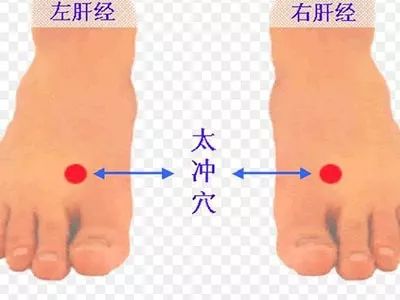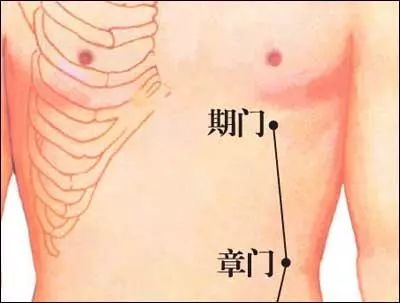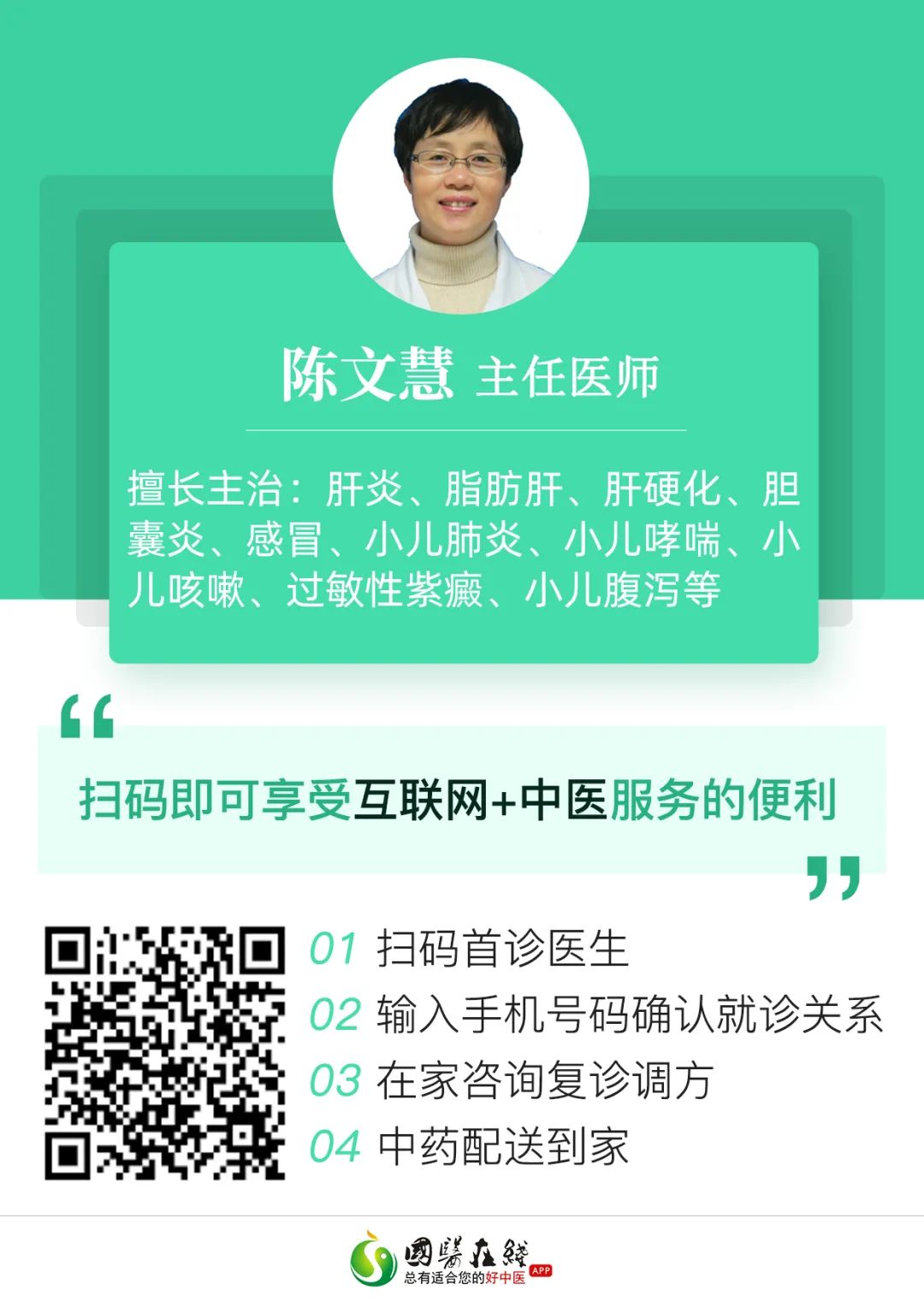This public account is hosted by Yunnan Provincial Administration of Traditional Chinese Medicine. If you have not followed yet, please click the blue “Yunnan TCM” above to follow.

Introduction: In Traditional Chinese Medicine (TCM), it is said that all diseases arise from Qi. Therefore, only by resolving the issue of Liver Qi stagnation can women reduce their illnesses or even avoid them altogether. How to Determine Liver Qi Stagnation▶ Causes of Liver Qi Stagnation The following are common causes of Liver Qi stagnation:Family Disharmony: Frequent arguments between couples, tense relationships with in-laws, etc., can lead to discomfort in Liver Qi.Social Pressure: For instance, older unmarried women often face pressure from parents, relatives, and colleagues regarding marriage, compounded by negative societal views on their situation, leading to significant stress and discomfort in Liver Qi.Work Pressure: In modern workplaces, there is no gender preference; women face unprecedented pressure, especially white-collar workers who are torn between family and career, resulting in widespread discomfort in Liver Qi.Poor Self-Regulation: Many women struggle to cope with issues, tend to dwell on negative aspects of life and work, and lack the ability to self-soothe, which often leads to Liver Qi stagnation.
How to Determine Liver Qi Stagnation▶ Causes of Liver Qi Stagnation The following are common causes of Liver Qi stagnation:Family Disharmony: Frequent arguments between couples, tense relationships with in-laws, etc., can lead to discomfort in Liver Qi.Social Pressure: For instance, older unmarried women often face pressure from parents, relatives, and colleagues regarding marriage, compounded by negative societal views on their situation, leading to significant stress and discomfort in Liver Qi.Work Pressure: In modern workplaces, there is no gender preference; women face unprecedented pressure, especially white-collar workers who are torn between family and career, resulting in widespread discomfort in Liver Qi.Poor Self-Regulation: Many women struggle to cope with issues, tend to dwell on negative aspects of life and work, and lack the ability to self-soothe, which often leads to Liver Qi stagnation. Manifestations of Liver Qi Stagnation One manifestation is Qi stagnation, where Qi is blocked within the body, leading to feelings of depression and oppression, commonly described as feeling “stifled” or “angry inside.” This is a typical sign of Liver Qi stagnation. Prolonged stagnation can generate heat, leading to excessive Liver fire, irritability, and a short temper. Some individuals may sigh frequently, feel unhappy, and risk developing serious illnesses due to self-neglect; others may become impulsive, easily angered, causing distress to themselves and others. Many women report that they are aware of their poor health and wish to take blood-nourishing supplements, but they often develop mouth ulcers or have trouble sleeping after taking them, tossing and turning restlessly at night. Some believe this is due to “deficiency not receiving nourishment,” but in fact, these issues are mostly caused by Liver fire; if Liver fire is obstructing the pathway, how can nourishment be absorbed? The dangers of Liver Qi stagnation are significant and beyond imagination. It can lead to blood stasis, weak temper, dampness accumulation, and even Yin deficiency with Yang excess… In summary, the “crimes” of Liver Qi stagnation are numerous. Vice President Wang Guowei of Beijing Traditional Chinese Medicine Hospital stated on Beijing TV’s “Health Hall” program, “All diseases stem from the liver.” Nowadays, many people suffer from Liver Qi stagnation, especially women who juggle family responsibilities and careers, raising and educating children while also caring for elderly parents, making it difficult to avoid Liver Qi stagnation.
Manifestations of Liver Qi Stagnation One manifestation is Qi stagnation, where Qi is blocked within the body, leading to feelings of depression and oppression, commonly described as feeling “stifled” or “angry inside.” This is a typical sign of Liver Qi stagnation. Prolonged stagnation can generate heat, leading to excessive Liver fire, irritability, and a short temper. Some individuals may sigh frequently, feel unhappy, and risk developing serious illnesses due to self-neglect; others may become impulsive, easily angered, causing distress to themselves and others. Many women report that they are aware of their poor health and wish to take blood-nourishing supplements, but they often develop mouth ulcers or have trouble sleeping after taking them, tossing and turning restlessly at night. Some believe this is due to “deficiency not receiving nourishment,” but in fact, these issues are mostly caused by Liver fire; if Liver fire is obstructing the pathway, how can nourishment be absorbed? The dangers of Liver Qi stagnation are significant and beyond imagination. It can lead to blood stasis, weak temper, dampness accumulation, and even Yin deficiency with Yang excess… In summary, the “crimes” of Liver Qi stagnation are numerous. Vice President Wang Guowei of Beijing Traditional Chinese Medicine Hospital stated on Beijing TV’s “Health Hall” program, “All diseases stem from the liver.” Nowadays, many people suffer from Liver Qi stagnation, especially women who juggle family responsibilities and careers, raising and educating children while also caring for elderly parents, making it difficult to avoid Liver Qi stagnation.
 How to Self-Diagnose Liver Qi Stagnation Just as evidence is necessary for solving a case, self-diagnosis requires similar rigor. The most critical evidence for Liver Qi stagnation can be found on the tongue. Typically, a person’s tongue is oval-shaped, while someone with Liver Qi stagnation has a pointed tongue, with a red tip and edges—this is a key clue for Liver Qi stagnation. Of course, to confirm Liver Qi stagnation, you will need the following additional “evidence.” (1) Bitter taste: Many women notice a bitter taste in their mouth, especially in the morning.(2) Dry throat: Feeling dryness in the mouth and throat, as if there is no saliva, although some may observe saliva on the tongue.(3) Sensation of a lump in the throat: A feeling of something stuck in the throat, like a bayberry pit, which cannot be coughed up or swallowed, known as “plum pit Qi.” (4) Dizziness: Some women frequently experience dizziness, either all day or in sudden episodes, and some may also have headaches.(5) Poor appetite: “Liver wood counteracts spleen earth,” so discomfort in Liver Qi can lead to various spleen and stomach issues, such as lack of appetite, bloating, and stomach pain.(6) Alternating chills and fever: Feeling hot when dressed and cold when undressed, complaining of heat in a warm room and cold outside.(7) Irritability: Individuals with Liver Qi stagnation often feel irritable, easily angered, and prone to brooding.(8) Nausea: Due to “Liver wood counteracting spleen earth,” leading to upward stomach Qi, causing belching, acid reflux, or even vomiting.(9) Chest tightness: Feeling tightness in the chest, even diagnosed with heart issues. In fact, individuals with heart problems should first address Liver Qi stagnation if their tongue is pointed.(10) Rib pain: A persistent feeling of pain in the ribs.(11) Insomnia with vivid dreams: Insomnia can primarily stem from two causes: blood deficiency or Liver Qi stagnation. Vivid dreams are also a manifestation of Liver Qi stagnation, with such individuals dreaming continuously upon falling asleep.(12) Low mood: Sighing, feeling melancholic, and being particularly sensitive.(13) Cold hands and feet: Many know that cold extremities can result from Yang deficiency, blood deficiency, or blood stasis, but few recognize that cold hands and feet can also be caused by Liver Qi stagnation. If cold extremities coincide with the above symptoms, consider the possibility of Liver Qi stagnation.
How to Self-Diagnose Liver Qi Stagnation Just as evidence is necessary for solving a case, self-diagnosis requires similar rigor. The most critical evidence for Liver Qi stagnation can be found on the tongue. Typically, a person’s tongue is oval-shaped, while someone with Liver Qi stagnation has a pointed tongue, with a red tip and edges—this is a key clue for Liver Qi stagnation. Of course, to confirm Liver Qi stagnation, you will need the following additional “evidence.” (1) Bitter taste: Many women notice a bitter taste in their mouth, especially in the morning.(2) Dry throat: Feeling dryness in the mouth and throat, as if there is no saliva, although some may observe saliva on the tongue.(3) Sensation of a lump in the throat: A feeling of something stuck in the throat, like a bayberry pit, which cannot be coughed up or swallowed, known as “plum pit Qi.” (4) Dizziness: Some women frequently experience dizziness, either all day or in sudden episodes, and some may also have headaches.(5) Poor appetite: “Liver wood counteracts spleen earth,” so discomfort in Liver Qi can lead to various spleen and stomach issues, such as lack of appetite, bloating, and stomach pain.(6) Alternating chills and fever: Feeling hot when dressed and cold when undressed, complaining of heat in a warm room and cold outside.(7) Irritability: Individuals with Liver Qi stagnation often feel irritable, easily angered, and prone to brooding.(8) Nausea: Due to “Liver wood counteracting spleen earth,” leading to upward stomach Qi, causing belching, acid reflux, or even vomiting.(9) Chest tightness: Feeling tightness in the chest, even diagnosed with heart issues. In fact, individuals with heart problems should first address Liver Qi stagnation if their tongue is pointed.(10) Rib pain: A persistent feeling of pain in the ribs.(11) Insomnia with vivid dreams: Insomnia can primarily stem from two causes: blood deficiency or Liver Qi stagnation. Vivid dreams are also a manifestation of Liver Qi stagnation, with such individuals dreaming continuously upon falling asleep.(12) Low mood: Sighing, feeling melancholic, and being particularly sensitive.(13) Cold hands and feet: Many know that cold extremities can result from Yang deficiency, blood deficiency, or blood stasis, but few recognize that cold hands and feet can also be caused by Liver Qi stagnation. If cold extremities coincide with the above symptoms, consider the possibility of Liver Qi stagnation. The above are the criteria for diagnosing Liver Qi stagnation. If at least one or two points match, and the tongue is pointed, it can generally be concluded that there is Liver Qi stagnation. In fact, even without considering these symptoms, women can often sense it themselves. They are aware of their emotional state, any distressing events, who has upset them, whether they feel pent-up anger, and the level of work pressure… These matters are clearer to them than anyone else, so the true diagnostic standard for Liver Qi stagnation lies within their own hearts.
The above are the criteria for diagnosing Liver Qi stagnation. If at least one or two points match, and the tongue is pointed, it can generally be concluded that there is Liver Qi stagnation. In fact, even without considering these symptoms, women can often sense it themselves. They are aware of their emotional state, any distressing events, who has upset them, whether they feel pent-up anger, and the level of work pressure… These matters are clearer to them than anyone else, so the true diagnostic standard for Liver Qi stagnation lies within their own hearts. Cupping and Moxibustion for Liver Qi Stagnation To regulate Liver Qi stagnation, moxibustion combined with cupping is highly effective. The specific acupoints for moxibustion and cupping are as follows:▶ Tai Chong (Liver 3) Tai Chong is an acupoint on the Foot Jueyin Liver Meridian, located in the depression at the junction of the first and second metatarsal bones on the dorsum of the foot. Cupping followed by moxibustion at this point can help regulate Qi, soothe the liver, invigorate blood circulation, and promote the smooth flow of Qi and blood.
Cupping and Moxibustion for Liver Qi Stagnation To regulate Liver Qi stagnation, moxibustion combined with cupping is highly effective. The specific acupoints for moxibustion and cupping are as follows:▶ Tai Chong (Liver 3) Tai Chong is an acupoint on the Foot Jueyin Liver Meridian, located in the depression at the junction of the first and second metatarsal bones on the dorsum of the foot. Cupping followed by moxibustion at this point can help regulate Qi, soothe the liver, invigorate blood circulation, and promote the smooth flow of Qi and blood. ▶ Qi Men (Liver 14) Qi Men is the front-mu point of the Foot Jueyin Liver Meridian, located in the sixth intercostal space, four cun lateral to the anterior midline (directly below the nipple). Moxibustion at this point can soothe the liver and strengthen the spleen, regulate Qi, and invigorate blood circulation. Cupping can also be performed at this point along with Gan Shu (Liver Shu) and Diaphragm Shu for the effects of soothing the liver, invigorating blood, and resolving stasis, primarily treating chest and rib pain. Rubbing the sides of the ribs with both hands can also help soothe the liver and relieve stagnation.
▶ Qi Men (Liver 14) Qi Men is the front-mu point of the Foot Jueyin Liver Meridian, located in the sixth intercostal space, four cun lateral to the anterior midline (directly below the nipple). Moxibustion at this point can soothe the liver and strengthen the spleen, regulate Qi, and invigorate blood circulation. Cupping can also be performed at this point along with Gan Shu (Liver Shu) and Diaphragm Shu for the effects of soothing the liver, invigorating blood, and resolving stasis, primarily treating chest and rib pain. Rubbing the sides of the ribs with both hands can also help soothe the liver and relieve stagnation. ▶ Dan Zhong (Ren 17) Located at the level of the fourth intercostal space, on the midline (between the two nipples). Cupping at this point can invigorate blood circulation, open the chest, regulate Qi, and relieve cough and asthma. Even massaging this point can yield good results, alleviating symptoms such as chest tightness, cough, and vomiting. Cupping at the above acupoints should be done for 5-10 minutes if there is no significant discomfort. Generally, a course of treatment consists of 10 sessions, with cupping performed every 5 days, and moxibustion every other day. The color of the cupping marks reflects each individual’s constitution and health status:
▶ Dan Zhong (Ren 17) Located at the level of the fourth intercostal space, on the midline (between the two nipples). Cupping at this point can invigorate blood circulation, open the chest, regulate Qi, and relieve cough and asthma. Even massaging this point can yield good results, alleviating symptoms such as chest tightness, cough, and vomiting. Cupping at the above acupoints should be done for 5-10 minutes if there is no significant discomfort. Generally, a course of treatment consists of 10 sessions, with cupping performed every 5 days, and moxibustion every other day. The color of the cupping marks reflects each individual’s constitution and health status: ▶ Purple-black cupping marks indicate blood stasis;▶ Dark red cupping marks indicate stasis heat and more severe conditions;▶ Pale and slightly swollen cupping marks with moisture on the inner wall indicate Yang deficiency leading to water retention;▶ Cupping marks with clear surface patterns, enlarged pores, and slight itching indicate wind and dampness invasion. During cupping, one may feel localized tightness, coolness, or swelling; if there is no significant discomfort, the cupping marks will naturally fade within 3 to 5 days without special treatment.
▶ Purple-black cupping marks indicate blood stasis;▶ Dark red cupping marks indicate stasis heat and more severe conditions;▶ Pale and slightly swollen cupping marks with moisture on the inner wall indicate Yang deficiency leading to water retention;▶ Cupping marks with clear surface patterns, enlarged pores, and slight itching indicate wind and dampness invasion. During cupping, one may feel localized tightness, coolness, or swelling; if there is no significant discomfort, the cupping marks will naturally fade within 3 to 5 days without special treatment.
Copyright Statement
This article is selected from the TCM community, published by Yunnan TCM, and the copyright belongs to the original author.
Editor 丨 Ma Chunli


